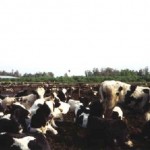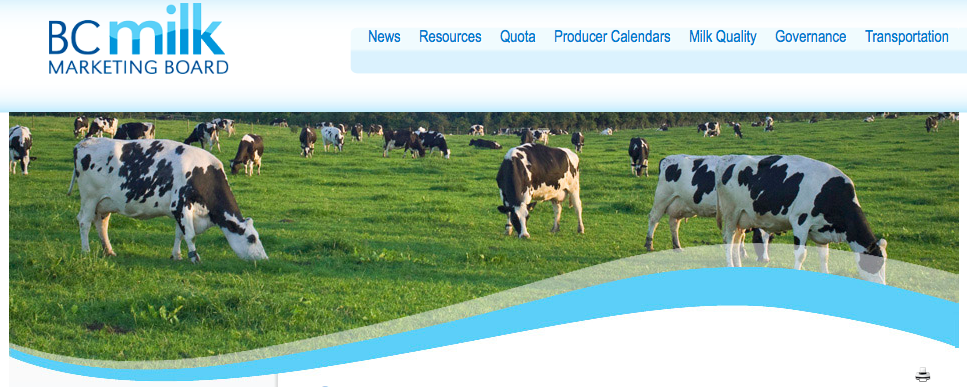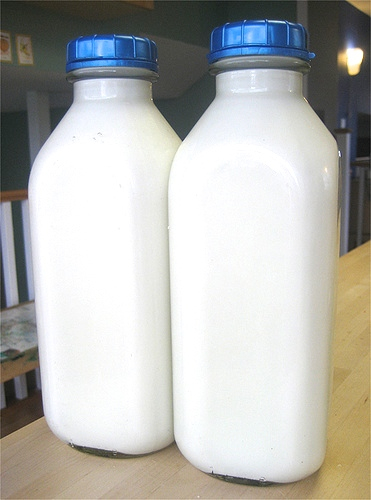 Have you thought about the milk you’ve been drinking this week and where it came from?
Have you thought about the milk you’ve been drinking this week and where it came from?
It’s so easy to let yesterweek’s news of animal cruelty in the dairy industry slip between the cracks of things you care about and want to change, and things you just need to get done to survive the week. Life is busy, I get it.
I get it and I still think it’s worth not letting this issue slip back into obscurity. Because the lives and welfare of these kind, gentle animals is at stake. And if we don’t care enough to do something, there’s no guarantee someone else will.
What Happened, Short-Term
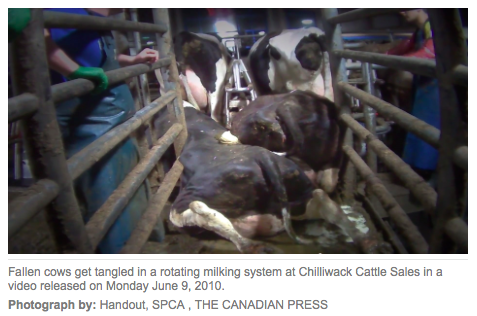 Two and a half weeks ago news broke about animal cruelty in the local dairy industry when Mercy for Animals Canada released undercover video from Chilliwack Cattle Sales, a local dairy factory farm, showing employees beating and tormenting the very cows who give the milk you drink. For about a week there was an uproar amongst the related governing bodies (BC Ministry of Agriculture, the Farm Industry Review Board, the BC Milk Marketing Board, the BC Dairy Association, and the BC Dairy Council) as they raced outdo each other in damage control statements to the media.
Two and a half weeks ago news broke about animal cruelty in the local dairy industry when Mercy for Animals Canada released undercover video from Chilliwack Cattle Sales, a local dairy factory farm, showing employees beating and tormenting the very cows who give the milk you drink. For about a week there was an uproar amongst the related governing bodies (BC Ministry of Agriculture, the Farm Industry Review Board, the BC Milk Marketing Board, the BC Dairy Association, and the BC Dairy Council) as they raced outdo each other in damage control statements to the media.
On the upside, the surge in attention led to petitions signed by concerned citizens, firing of the employees caught on film, and the refusal by Saputo (Canada’s largest dairy processor) to accept milk from the offending farm. Also in good news, Chilliwack Cattle Sales agreed to 24-hour surveillance, third party site audits, and employee training. That’s an excellent result for the short-term and a big “hurrah” for everyone who signed petitions voicing their concern.
Long Term Goal
Then, a mere two weeks after the video was first released, Saputo announced it is once again accepting milk from the offending farm. So everything is fixed, right?
Well, not so fast. The high public profile of this case has Saputo and other industry organizations endorsing the recommendation of the BC SPCA that the Canadian Code of Practice for the Care and Handling of Dairy Cattle, published in 2009, be adopted into law in the province. But for that to happen, let alone in any kind of timely manner (if ever), we the consumers who support dairy producers with our purchases need to be clear on the truth of what’s happening in the industry and commit to insisting on change.
Know Where Your Milk REALLY Comes From
Where we like to think our milk comes from…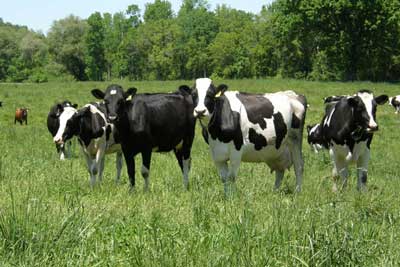
Where our milk actually comes from…
Ensuring animal welfare doesn’t just mean not hitting or kicking them. With 3,500 cows at their disposal Chilliwack Cattle Sales may be the largest dairy producer in BC but they are by no means the only ones who house their animals in dismal situations similar to the images seen above. The majority do.
In fact, “factory farm” is a very accurate term to describe how these animals are treated. Moved on conveyor belts (no joke), mass milked, housed in cramped quarters, it’s not even close to the pictures you see on dairy industry websites because seriously, would you want to drink milk if those are the images you remember each time you arrive at the dairy section of the supermarket?
It’s not okay to see animals treated this way. Please continue to ask the tough questions, see past the misleading, happy cow photos that mask the truth, and support change with your wallet. Even if that’s all you can do, that action is worth its weight in gold.
Sources: Global News BC, The Vancouver Sun



